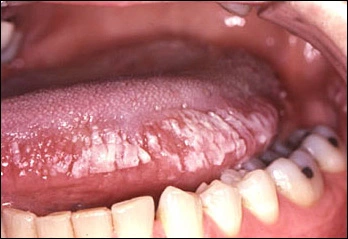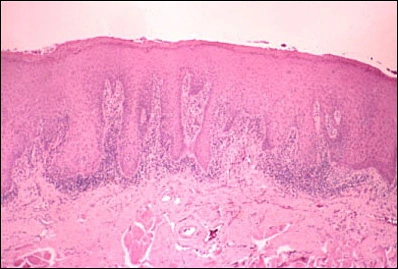White Plaque of the Lateral Tongue
Case Challenge Number: 11
Diagnostic Information
History of Present Illness Despite being present on the left lateral tongue for six months, the lesion was not painful as described by the patient but rather sore or irritating at times. She was unaware of any bleeding or ulceration at the site. She denied chewing on her tongue, and she was certain the lesion was not factitial in nature. She had never sought treatment for the lesion, nor did she take any medications to try to resolve the lesion. Past Medical History The patient’s past medical history was unremarkable. She had no contributing history of hospitalizations or surgeries, and she was taking no medications. She also stated she had no known drug or food allergies. Her social history revealed she had been in a monogamous relationship for many years. She also had no history of smoking, alcohol, injecting drug use, or immunosuppression. Clinical Examination Findings Clinical examination showed a ragged, somewhat patchy, white plaque involving the left lateral tongue that could not be wiped off. (Figure 1) No bleeding or ulceration was seen, and no evidence of induration could be detected on palpation.The patient had her natural dentition, and there were no fractured teeth or sharp restorations adjacent to the lesion. No other oral mucosal lesions were observed and salivary output appeared to be sufficient upon visual inspection.
Figure 1. Adherent white plaque with a ragged surface on the lateral tongue
Incisional Biopsy and Photomicrographs
Histologically, the epithelium demonstrated variable amounts of hyperkeratosis, atrophy of the spinous layer, leukocytic exocytosis, and basilar crowding and atypia. (Figure 2)
__Figure 2. __
Subjacent to the epithelium was a band of chronic inflammatory cells, which in some areas effaced the rete ridge architecture. (Figure 3) A perivascular infiltrate comprised mostly of lymphocytes, with occasional plasma cells, was seen in association with the vascular channels in the connective tissue. Upon staining with the periodic acid-Schiff (PAS) method, no evidence of fungal forms was identified in the superficial epithelium.
Figure 3.




